Understanding the Complexities of Impulse Management in Autism Spectrum Disorder
Impulsivity is a common yet challenging aspect of autism spectrum disorder (ASD), affecting children’s social interactions, emotional regulation, and overall functioning. While not a core symptom, impulse control issues significantly influence the daily life of autistic individuals. This article explores the relationship between autism and impulse control, discusses behavioral challenges, and presents practical strategies and interventions that can help improve self-regulation in children with autism.
The Neurobiological Roots of Impulsivity in Autism

What is the relationship between autism spectrum disorder and impulse control?
Children and adults with autism spectrum disorder (ASD) often struggle with impulse control, which can manifest as sudden outbursts, difficulty in waiting turns, or acting without considering consequences. These challenges are primarily linked to impairments in executive functioning, a set of mental skills responsible for self-regulation, planning, and problem-solving.
Neuroimaging research reveals that individuals with autism show atypical activity in several key brain regions involved in impulse regulation. The prefrontal cortex, which is crucial for decision-making and inhibiting inappropriate behaviors, often develops or functions differently in autistic individuals. Additionally, fronto-parietal networks that connect various parts of the brain responsible for attention and control are also atypically active.
This neural difference can lead to difficulties in linking actions with their outcomes, making it more challenging to control impulses and behave adaptively across various social and stressful situations.
While impulsivity is not a core diagnosis of autism, it significantly influences habits, social interactions, and emotional well-being. Interventions such as applied behavior analysis (ABA), visual schedules, and social skills training are effective in helping children and adults manage impulsivity better.
Understanding these neurobiological factors emphasizes the importance of tailored behavioral strategies and medical support, including medications when appropriate, to aid individuals with autism in developing better self-control and reducing impulsive behaviors.
Behavioral Challenges and Manifestations of Impulsivity
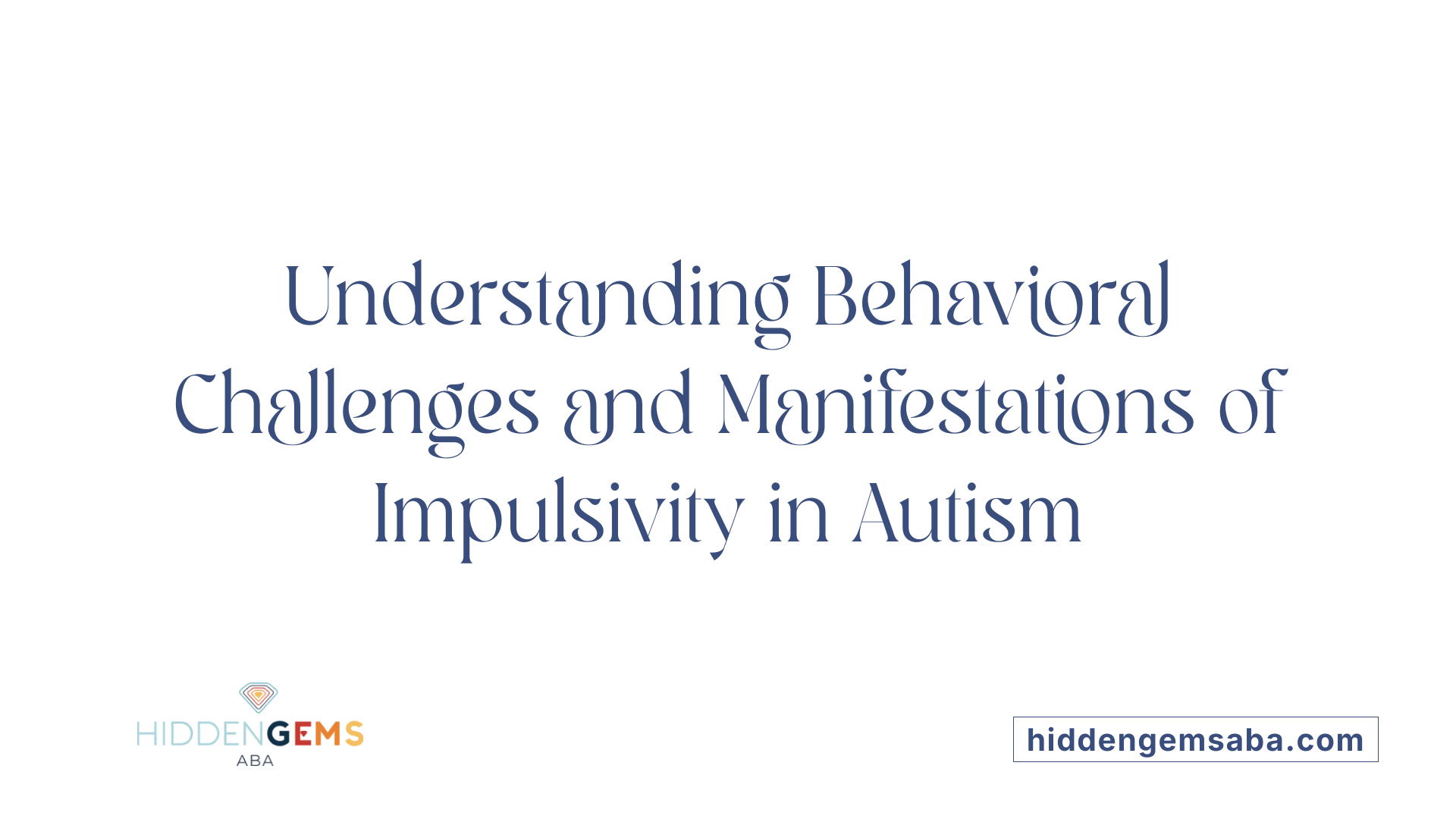
What are the behavioral challenges associated with impulse control in individuals with autism?
Individuals with autism commonly face a variety of behavioral challenges linked to difficulties in impulse control. These include tantrums, aggressive behaviors, self-injury, and destruction of property. Such behaviors are often impulsive, occurring suddenly and without much warning, making them particularly challenging for caregivers and educators to manage.
In addition to these outward behaviors, impulsive actions like grabbing objects, interrupting conversations, or acting without considering consequences are frequent. These actions are typically tied to underlying deficits in executive functioning, especially response inhibition and emotional regulation.
Neuroscientific research indicates that atypical activity within the fronto-parietal network of the brain contributes to these impulse control issues. Sensory processing difficulties and communication problems further complicate self-regulation, as children may become overwhelmed by sensory stimuli or struggle to articulate their needs and frustrations.
To support children with these challenges, strategies such as implementing visual schedules, breaking complex tasks into smaller steps, and using social stories can be effective. Reward systems like token economies encourage positive behaviors, and structured activities aimed at improving self-control and planning are crucial.
Effective interventions often include applied behavior analysis (ABA), functional behavior assessment (FBA), and techniques that foster emotional regulation and social understanding. Tailoring these approaches to each child's unique profile helps promote better self-awareness, flexibility, and adaptive behaviors, thereby reducing impulsivity and enhancing overall functioning.
Causes, Symptoms, and Detection of Impulse Control Difficulties
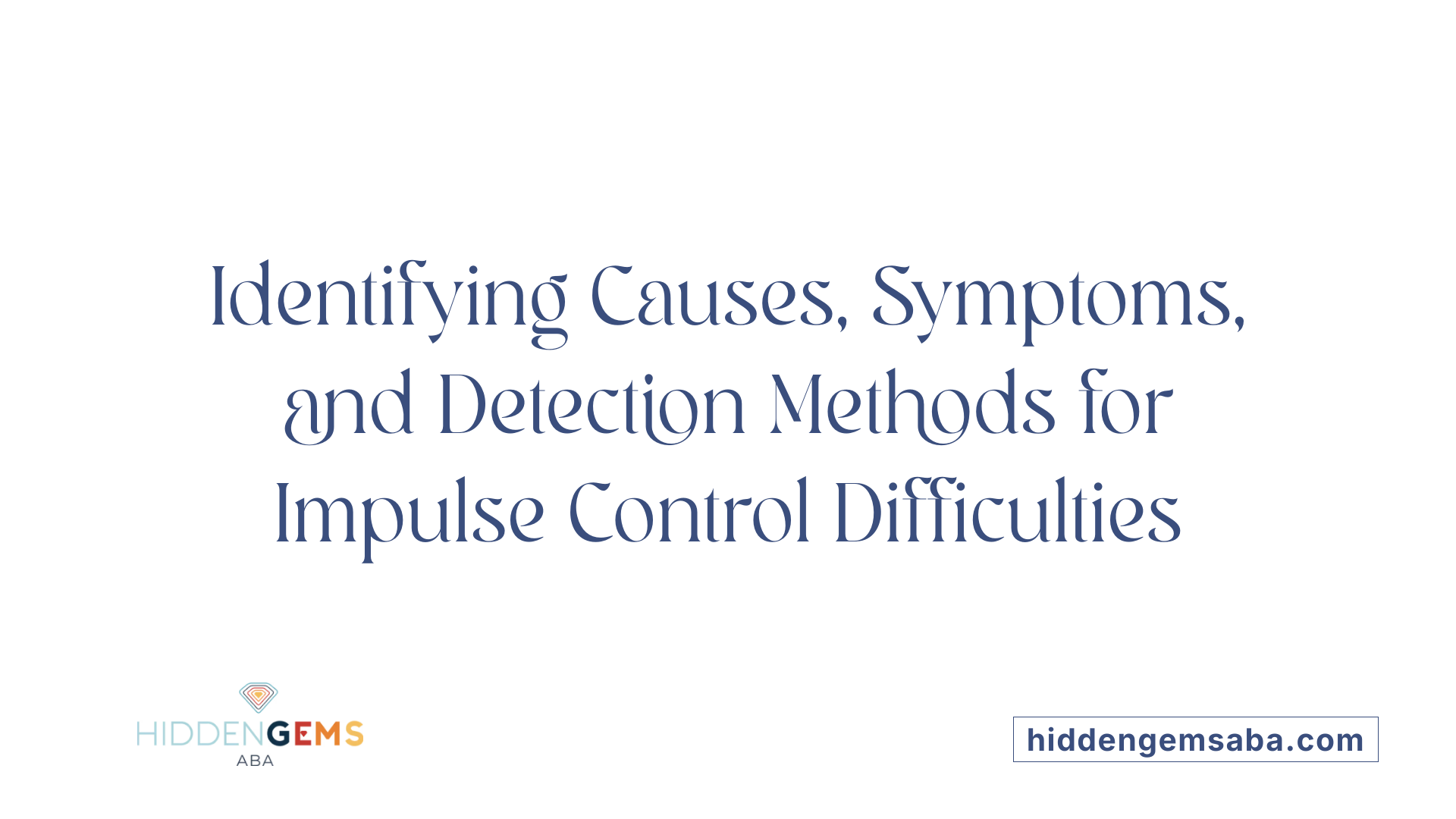
What causes and symptoms are associated with impulse control issues in autism?
Impulse control problems in children with autism spectrum disorder (ASD) and High-Functioning Autism (HFA) mainly stem from neurodevelopmental differences that impact executive functioning. These differences hinder abilities such as response inhibition, planning, and emotional regulation. As a result, affected children often display behaviors like impulsivity, hyperactivity, and acting without thinking. They may struggle with waiting their turn, blurt out answers, or react physically and emotionally through tantrums or aggression.
Sensory overload is a common trigger, where heightened sensitivities to lights, sounds, textures, or smells can lead to impulsive reactions. Additionally, environmental stressors like routine changes or overwhelming settings can escalate these behaviors. Communication difficulties also play a role, making it challenging for children to express frustrations calmly, further contributing to impulsivity.
To assess these issues, professionals often utilize parent-report questionnaires and behavioral observations. These tools help identify specific triggers and behavioral patterns, providing insight into how executive dysfunction manifests in daily life. Recognizing these signs early allows for tailored interventions like visual schedules, social stories, reinforcement strategies such as applied behavior analysis (ABA), and teaching emotional regulation skills. Addressing both the neurological and environmental factors is essential to support children in managing their impulse control more effectively.
Strategies and Interventions for Managing Impulsivity
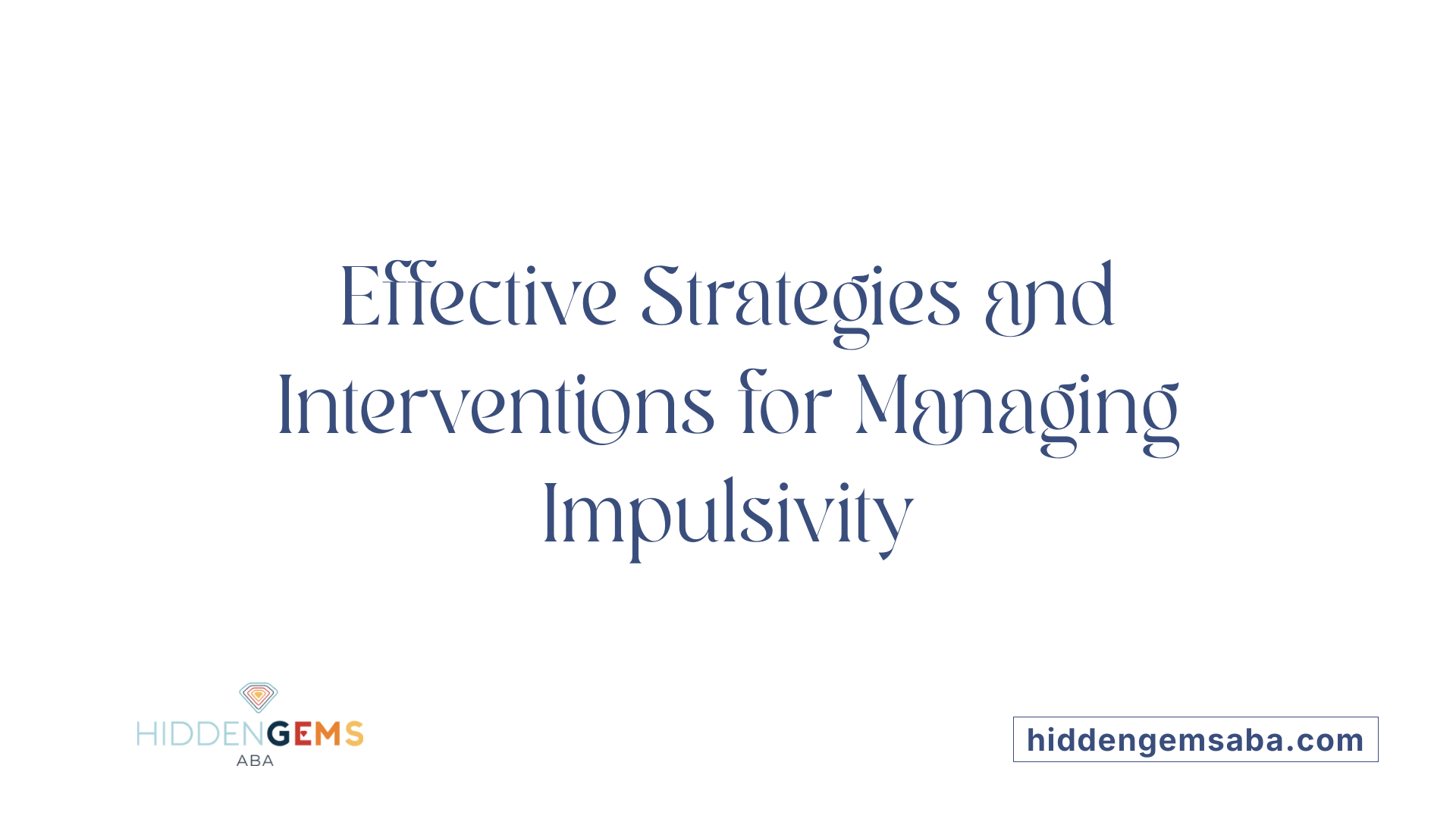
What strategies and interventions can be used to manage impulsivity in children with autism?
Managing impulsivity in children with autism involves a combination of tailored behavioral and environmental strategies. Behavioral interventions such as Applied Behavior Analysis (ABA) are widely used to help children recognize triggers and modify their behaviors. ABA uses reinforcement techniques to encourage positive actions and discourage impulsive reactions.
Functional Communication Training (FCT) is another effective approach. It teaches children appropriate ways to express their needs and emotions, which can reduce aggressive or impulsive behaviors driven by frustration or misunderstanding.
Visual supports, like picture schedules and visual rules, help children understand what to expect and improve their ability to control impulses. Structured routines prevent surprises, and sensory regulation techniques—such as access to calming stimming activities—can decrease overstimulation that often leads to impulsive behaviors.
Therapies like Occupational Therapy (OT) and Cognitive Behavioral Therapy (CBT) further support self-regulation. OT can address sensory sensitivities, teaching children coping strategies to manage environmental triggers. CBT helps children develop skills to control emotional responses and improve decision-making.
Establishing clear boundaries, consistent rules, and positive reinforcement strategies encourages adaptive behaviors and reduces impulsivity. Tailoring interventions to each child’s specific needs, preferences, and triggers is vital for success.
Professional guidance from healthcare providers, including pediatricians, psychologists, and occupational therapists, ensures the development of an individualized plan. Regular assessment and adjustment of strategies help optimize outcomes and support children’s growth in managing impulses effectively.
The Role of Medication and Professional Guidance
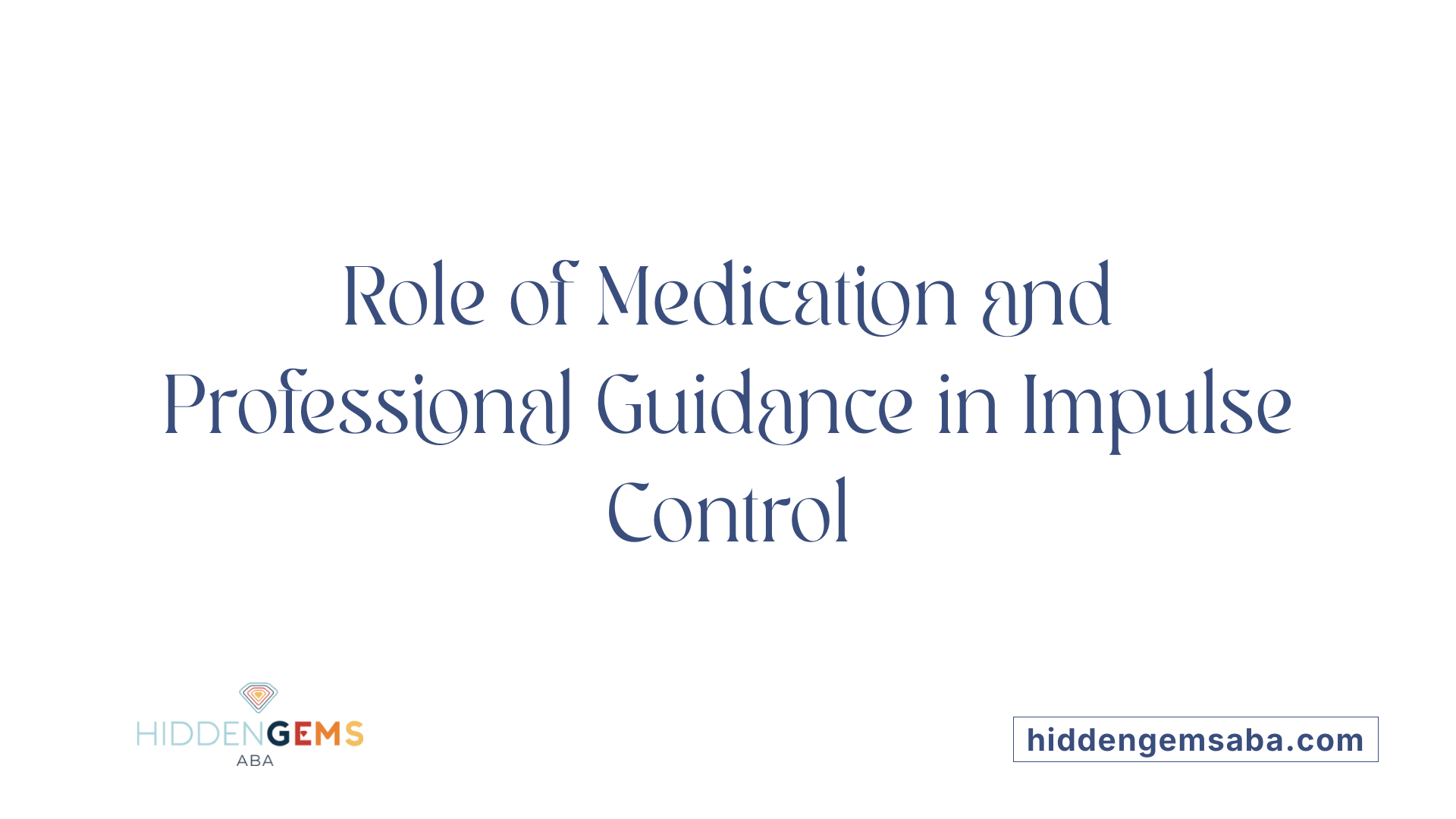 Managing impulse control challenges in children with autism spectrum disorder (ASD) often requires a combination of medication and professional support. Pharmacological treatments, such as risperidone and aripiprazole, are commonly used to reduce aggression, irritability, and repetitive behaviors. Stimulants like methylphenidate can also be prescribed to improve focus and attention, especially when hyperactivity or impulsivity is prominent. Mood stabilizers may be considered for children with additional mood regulation difficulties.
Managing impulse control challenges in children with autism spectrum disorder (ASD) often requires a combination of medication and professional support. Pharmacological treatments, such as risperidone and aripiprazole, are commonly used to reduce aggression, irritability, and repetitive behaviors. Stimulants like methylphenidate can also be prescribed to improve focus and attention, especially when hyperactivity or impulsivity is prominent. Mood stabilizers may be considered for children with additional mood regulation difficulties.
It is essential that healthcare professionals, including psychiatrists and developmental pediatricians, closely monitor the effects of these medications. Regular assessment helps ensure safety, effectiveness, and proper dosage adjustments. Side effects such as weight changes, sleep disturbances, or behavioral activation require prompt attention and sometimes medication change.
Medication alone rarely addresses the root causes of impulse control issues. Therefore, it is generally part of a broader intervention plan that includes behavioral therapies like Applied Behavior Analysis (ABA) and Cognitive Behavioral Therapy (CBT). These therapies teach children strategies to manage impulses, improve emotional regulation, and develop social skills.
Professional guidance is vital for tailoring treatments to individual needs and ensuring that interventions are aligned with current best practices. Clear communication between caregivers, therapists, and medical providers enhances the child's progress and safety.
In conclusion, combining medication with expert oversight and behavioral strategies can significantly improve impulse control, helping children with autism participate more fully in daily life and social interactions.
Supporting Development and Education Approaches
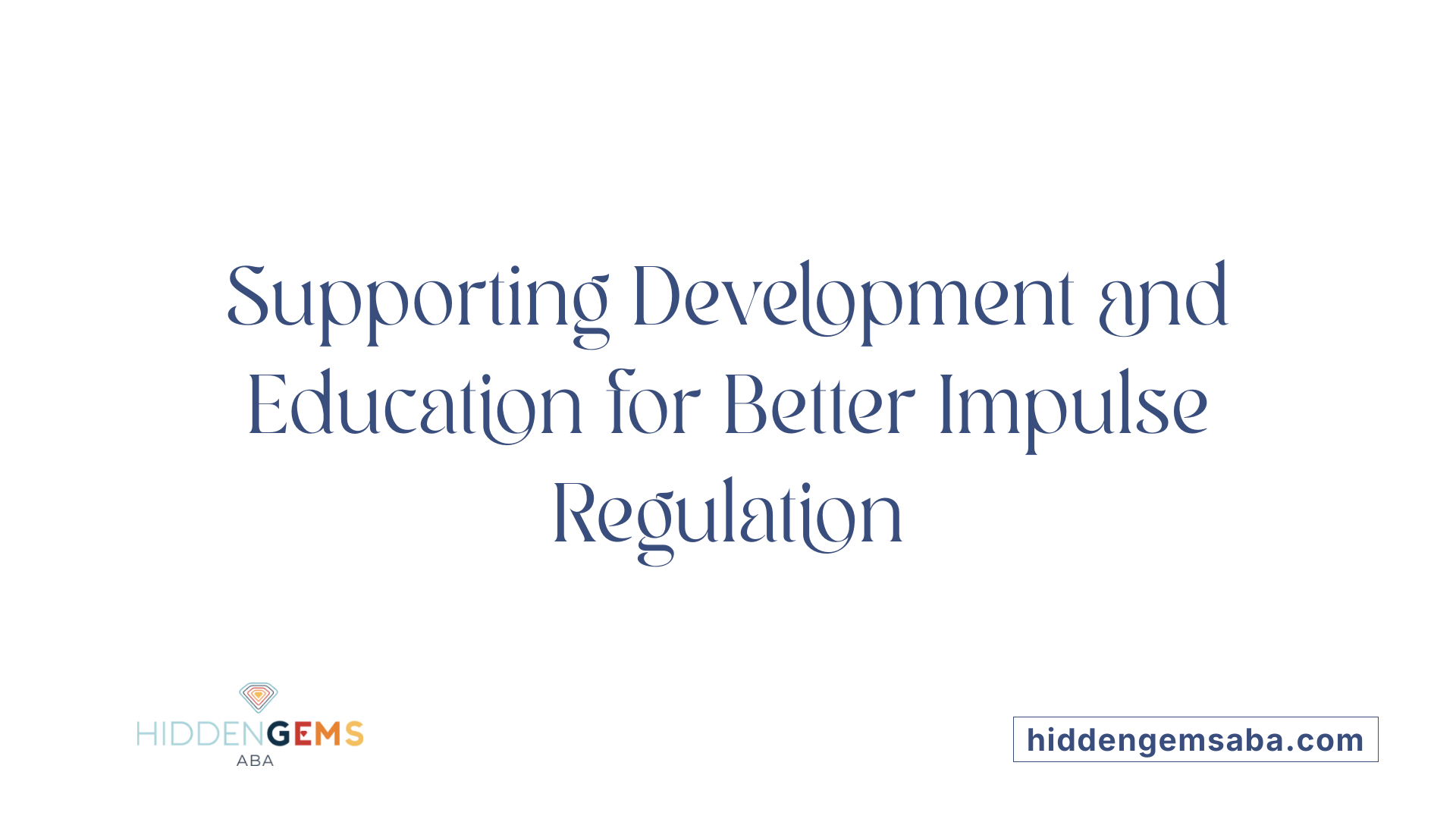
How can caregivers support children with autism in developing better impulse regulation skills?
Supporting children with autism in improving their impulse control involves a multifaceted approach. Establishing consistent routines and visual supports is fundamental, as these tools provide predictability that helps reduce anxiety and uncertainty. Visual schedules, social stories, and clear, simple instructions make expectations understandable, which is especially important since children with AS or HFA often struggle with vague language.
Breaking tasks into smaller, manageable steps allows children to focus and succeed without feeling overwhelmed. Using visual aids or social stories to explain rules or upcoming changes can prevent meltdowns and improve compliance. Incorporating therapeutic techniques like Applied Behavior Analysis (ABA) is highly effective, as it emphasizes positive reinforcement, structured practice, and skill-building in a controlled setting.
Engaging children in memory games, social scenarios, and patience-building activities can develop their ability to delay gratification and enhance emotional regulation. Physical activities such as sports or yoga can help channel excess energy and improve self-control. Relaxation techniques like deep breathing or mindfulness tailored for children can also calm overstimulated minds.
Furthermore, collaboration with professionals—such as occupational therapists, speech therapists, and behavioral specialists—provides personalized strategies suited to each child's needs. Creating a supportive home and school environment that consistently models patience and self-control reinforces these skills, leading to better social interactions and decision-making as children grow.
Research and Future Directions in Impulse Control Development
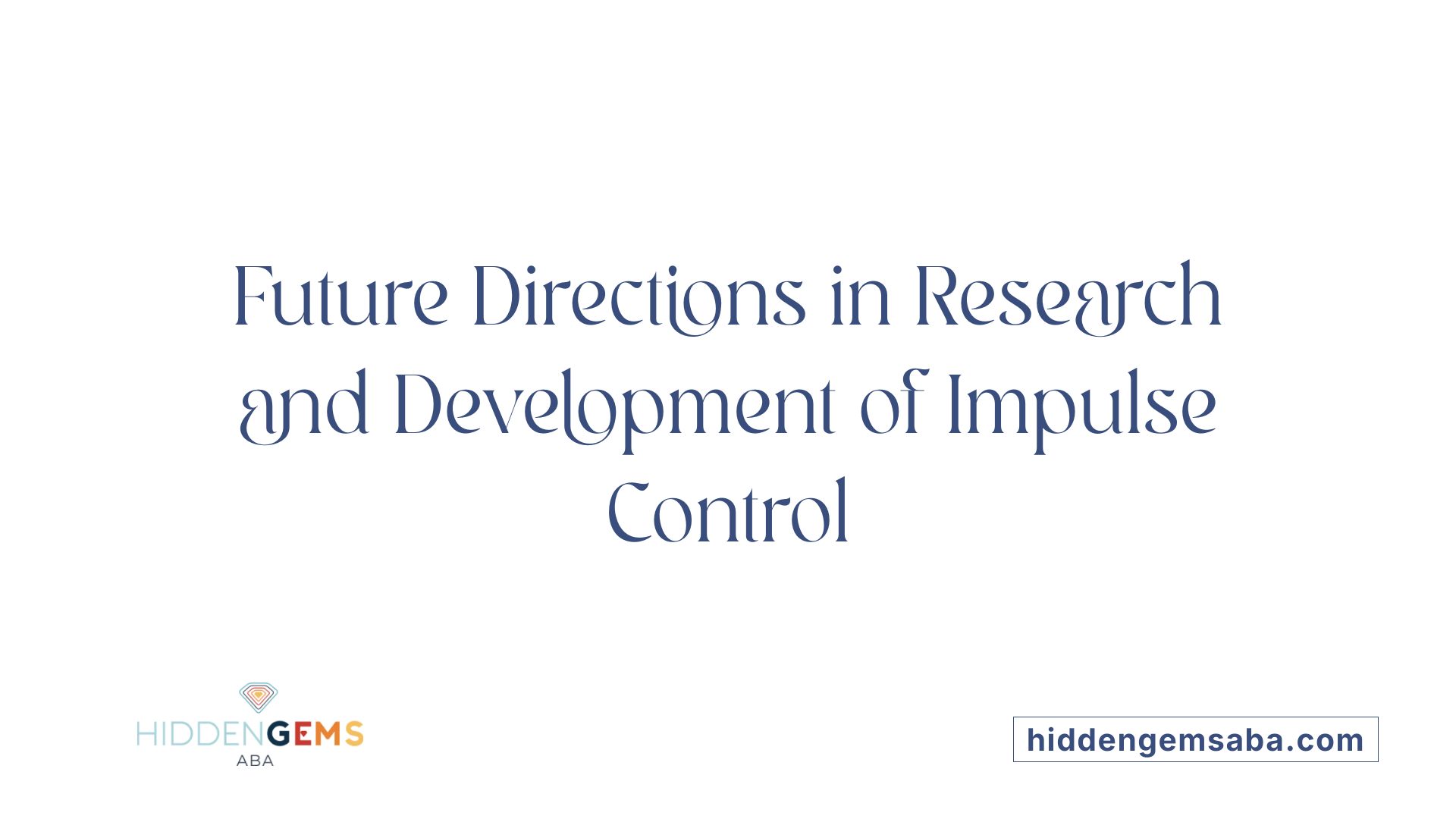
How does impulse control develop during childhood?
Impulse control generally improves as children grow older, thanks to brain maturation and experience. During early childhood, children often struggle with impulse regulation, resulting in behaviors like tantrums or difficulty waiting turns. As they approach ages 4 to 10, significant progress is usually observed, with children becoming better at managing their impulses and emotions.
This development is closely tied to the growth and maturation of the frontal lobes, especially areas involved in decision-making, self-control, and emotional regulation. By the time children reach late childhood, many show notable improvements, though some challenges may remain, especially in children with autism.
How does neural maturation of the frontal lobes relate to impulse control in children aged 4-10?
The frontal lobe, particularly the prefrontal cortex, is crucial for developing impulse control. This region matures rapidly during early childhood, which supports better judgment, planning, and self-regulation.
In children with autism, this process can be atypical or delayed. Neuroimaging studies suggest that dysfunctions in fronto-parietal networks, including the prefrontal cortex and anterior cingulate cortex, contribute to the difficulty in response inhibition and control of impulses.
What are recent research findings on neural and behavioral mechanisms behind impulse control?
Research indicates that impairments in neural networks responsible for response inhibition and interference control play a significant role in impulsivity among autistic individuals. These deficits are linked to abnormal activity or development in key brain areas.
Behavioral studies show that children with autism often exhibit deficits in motor timing and response accuracy, which are tied to neural dysfunctions.
Interventions such as DIRFloortime and timing exercises aim to improve regulation skills by engaging these neural pathways.
What interventions support the development of impulse control?
Effective interventions target both neural and behavioral aspects of impulse regulation. DIRFloortime focuses on emotional development and social engagement, helping children build self-awareness and response strategies.
Timing exercises enhance neural timing and sequencing, which can improve impulse control by training children to better anticipate and regulate their responses.
Other strategies include structured routines, visual supports, and social interaction games, all of which foster predictable environments conducive to learning self-control.
| Intervention Type | Focus Area | Description |
|---|---|---|
| DIRFloortime | Emotional regulation | Engages emotional and social skills to support impulse control |
| Timing exercises | Neural timing | Improves responsiveness and sequencing |
| Visual supports | Routine adherence | Helps children understand expectations and reduce impulsivity |
| Social games | Interaction skills | Encourages turn-taking and patience |
Ongoing research continues to refine these approaches, aiming to tailor interventions to individual neural profiles for better outcomes.
Looking Forward: Improving Impulse Control for Better Living
Understanding the complex relationship between autism and impulse control equips caregivers, educators, and professionals with the tools needed to support individuals on the spectrum effectively. While challenges remain, ongoing research into neural mechanisms, combined with proven behavioral and pharmacological strategies, offers hope for improved self-regulation. Developing personalized interventions, promoting early support, and fostering environments conducive to growth can significantly enhance emotional well-being, social skills, and daily functioning in autistic individuals. Continued emphasis on education, therapy, and family involvement will pave the way toward more adaptive, fulfilling lives for those affected by impulse control difficulties.
References
- How to Help Kids With Asperger's Learn Better Impulse Control
- Autism and Impulse Control: What Caregivers Should Know
- Does Autism Cause Impulsivity? - - Eagles WIll ABA
- Curbing Impulses: 7 Strategies for Teaching Impulse Control
- What to Know about Medication for Impulse Control in Autism
- Inattention, Overactivity, and Impulsiveness in Autism Spectrum ...
- Understanding the Link Between Autism and Compulsive Spending
- Developmental Traits of Impulse Control Behavior in School ...
- 40 Activities to improve impulse control in Autism
- Developmental Traits of Impulse Control Behavior in School ...






